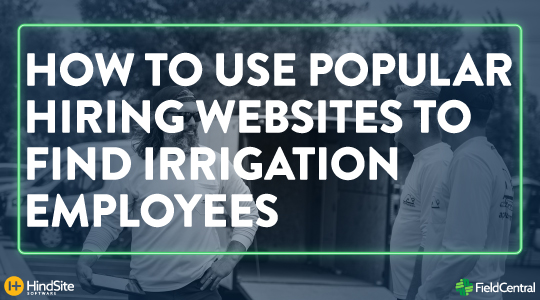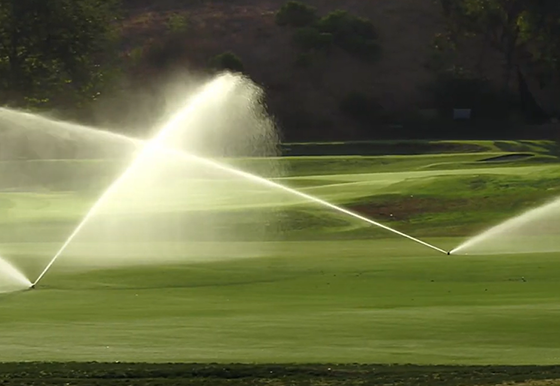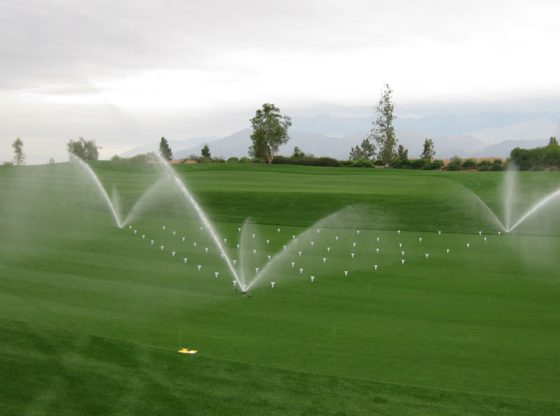How are your sprinklers performing? How high is your water bill? Are you looking to reduce that cost? A Water Audit can save your pocketbook!
What is a Water Audit?
A water audit is a complex series of tests that evaluate the health and efficiency of an irrigation system. An irrigation audit inspects and measures how effective the sprinklers are working together. Water audits can test each individual irrigation zone or a targeted area. Results are compiled and used in combination with other observations and measurements to support irrigation management. It also includes a catch-can test to monitor water distribution uniformity. This tool can reliably indicate a problem with the pumps, sprinklers, hydraulics or programming.
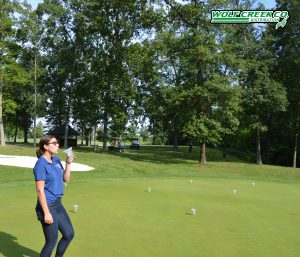
A water audit, conducted by a trained professional, is necessary to determine the proper equipment needed (spray heads, water pressure regulators, controller, etc.) and a schedule based on the evapotranspiration rate of the vegetation. Weather-based irrigation controllers (WBIC) can automatically adjust irrigation schedules to local conditions but must be installed and set up properly to achieve any water savings. Irrigation equipment only provides the tools for water efficiency; the tools must be used properly to obtain the desired results.
An auditor will compile data for installers, designers or managers – it is NOT their job to manage water, or design or install irrigation systems. Audits should be done regularly as part of the efficient management of irrigation systems. Regular audits are a must given the changes that happen in the weather and landscape. As your golf course changes, problems may develop that can not always be detected in a computer system. As parts wear out, they can develop defects. Dry and oversaturated spots are an indicator of a failing irrigation system. If flow meters are installed, data can be collected and compared to the computer system. Large differences between the two systems could be causing low-pressure problems. This issue creates the need for over-irrigation. It costs you money.
More Reasons for a Water Audit
The main reason for doing a Water Audit is your pocketbook. The Alliance for Water Efficiency reports: “Water audits performed across the country suggest that many golf courses use 20% to 50% more irrigation water than necessary. Reducing this overuse can save many golf courses 50,000 to 500,000 gallons per year (190 to 1,893 m3), or more.”
In addition to saving on water and your water bill, a water audit will save you from a complete failure in your irrigation system. Flaws in a sprinkler system may be difficult to detect unless a professional water audit is conducted.
Even More Water Tests
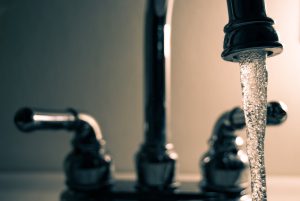
Restroom fixtures can be evaluated for conservation measures. Public restroom audits will help determine the need for replacing restroom fixtures. Here, you can consider using reclaimed or greywater for these facilities – read more below.
Many golfing facilities include restaurants, bars, and banquet services. Food preparation and dishwashing present excellent opportunities to conserve water. Food is often heated in conventional steamers using a central boiler; connectionless steamers use a reservoir and condensed steam system that can save thousands of gallons of water per year.
Pre-rinse spray valves, often using as much as 4 gpm (15.1 lpm) are used to rinse dishes before they are loaded in the dishwasher; new, efficient spray valves use only 1.2 gpm (4.54 lpm) and can save hundreds of gallons per day depending on volume and type of meals served. The water efficiency of commercial dishwashers varies greatly. The high cost of these machines often impairs the benefit-cost ratio of early replacement; but as older dishwashers fail, high-efficiency models should be installed as replacements.
Ice machines are commonly found in food and bar service facilities. This equipment can use surprisingly large amounts of water. Depending on the model and the settings, ice machines use 2 to 18 pounds (.91 kg to 8.2 kg) of water for every pound of ice produced. Replacing water-cooled ice machines with air-cooled models can result in significant water savings.
Options: Reclaimed Water
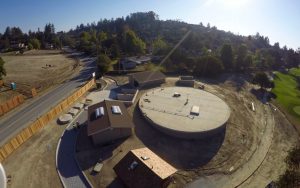
If your local wastewater treatment agency provides reclaimed water (wastewater treated to drinking water standards, though deemed non-potable), you have an excellent opportunity to supplant potable water use with reclaimed water use. Landscape irrigation is the most obvious opportunity to use this water, especially fairways and surrounding roughs. It is important to note some vegetation for the greens cannot tolerate the high total dissolved solids levels of reclaimed water. Reclaimed water can also be used to supply water to toilets and urinals. Depending on the water quality requirements, many cooling towers can also use reclaimed water rather than potable water.
In the April issue of the NGFQ a perfect example: In 2017, the highly-regarded Pasatiempo Golf Club in Santa Cruz, California built its own recycled water treatment facility – storage tank, filtration station and pump station – behind its 13th green. The project cost $9 million, but it’s paying quick dividends: Pasatiempo saved over 40 million gallons of potable water in its first season (May-October 2018) with the facility, according to Mandon, and about $500,000 in potable water costs.
Options: Rainwater Catchments
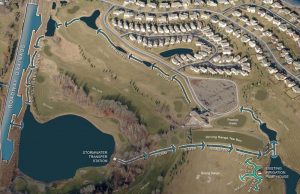
One of the fastest-growing strategies for water conservation and green building efforts is to collect storm- or rainwater on the building site (roof, parking lot, hardscape, landscape, etc). Many golf courses include water retention ponds to capture landscape run-off and as such provide nice water features on the course. These ponds can be used to store collected rainwater. There are three distinct advantages to harvesting rainwater:
- The collected water can be stored and used during drier months
- The water collected will not enter the stormwater system, which is often overtaxed in urban areas and can result in flash floods
- The pollutants from your site (fertilizers, herbicides, pesticides, etc) will not enter the stormwater system and not make its way to streams, rivers, and other sensitive ecosystems.
This Minnesota Stormwater Manual states: “Green Infrastructure: Stormwater and rainwater harvest and use systems can improve or maintain watershed hydrology, reduce pollutant loading to receiving waters, increase water conservation, reduce stress on existing infrastructure, and reduce energy consumption“. They show great case studies of rainwater catchment installations at Eagle Valley and Prestwick Golf Club, Woodbury (MN). Eagle Valley’s installation resulted in reductions in phosphorus (TP) to Colby Lake of 56 lbs per year, and a volume reduction of 6.1 acre/ft per event. For Prestwick: reductions in phosphorus of 43 lbs per year, and a volume reduction of 3.5 acre/ft per event.
Get Your Water Audit Scheduled
Your savings will start when you schedule your water audit with trained professionals, such as Wolf Creek Company. Inefficiencies in an irrigation system will be identified and modifications and repairs can be made to correct the problem. For more information on water audits, or to schedule a water audit, contact your local Wolf Creek Company location.


